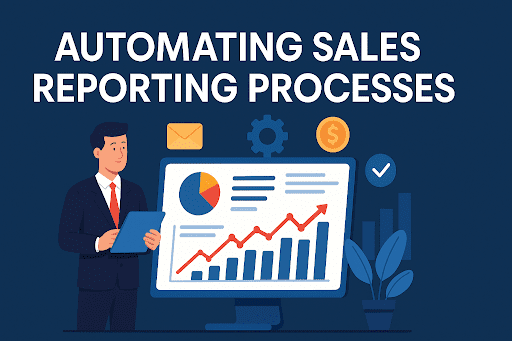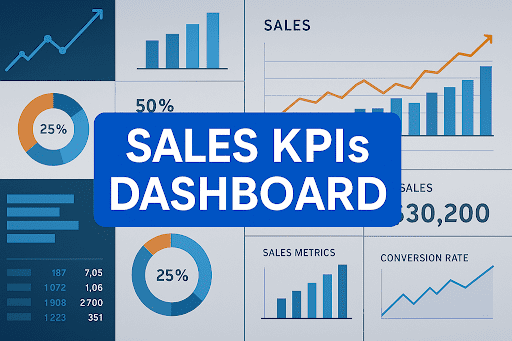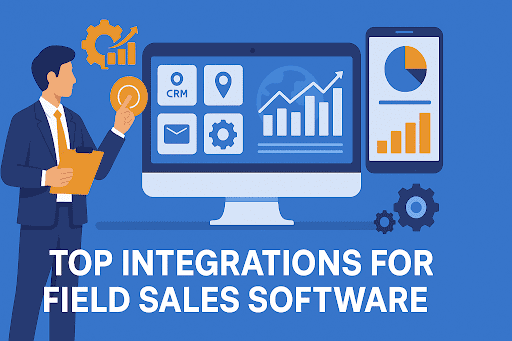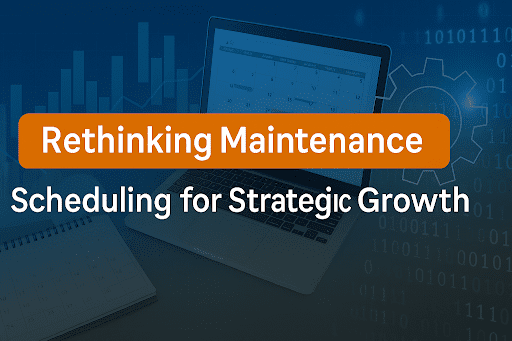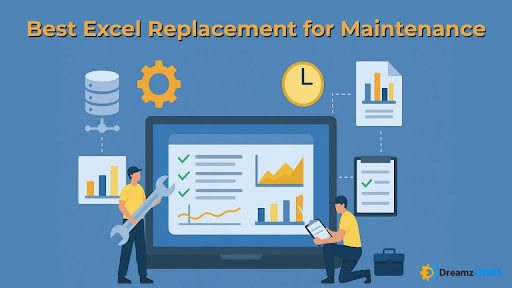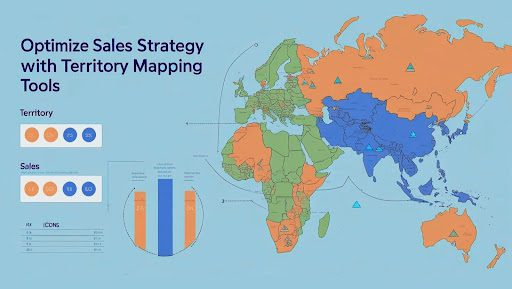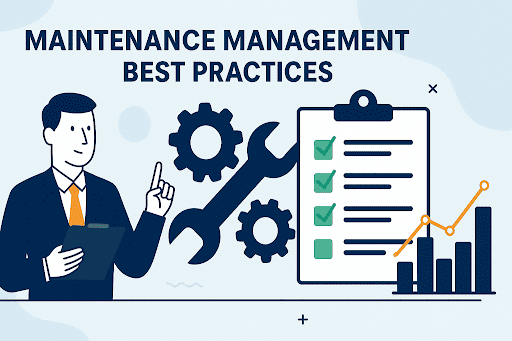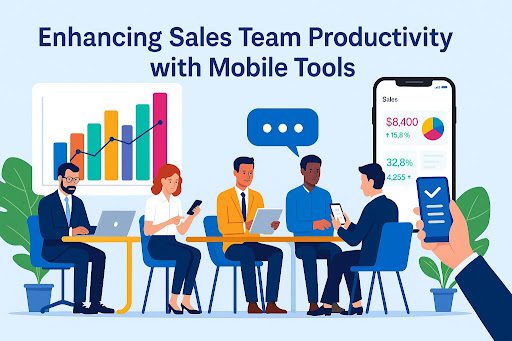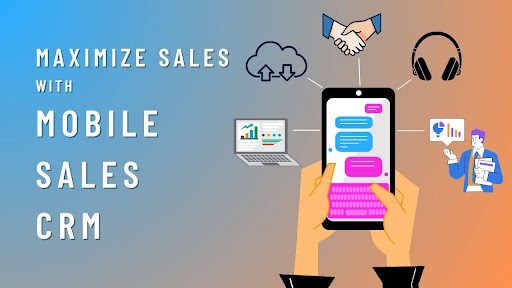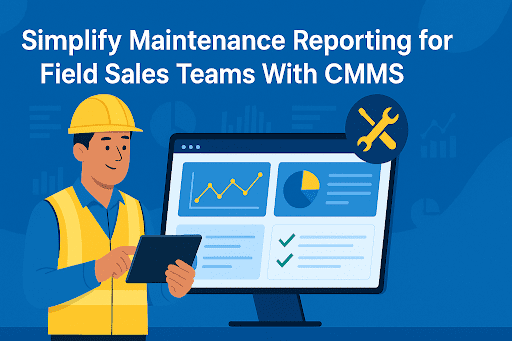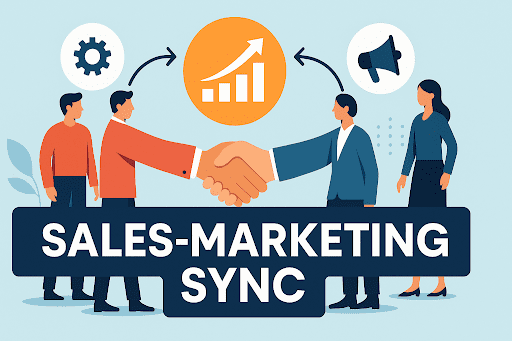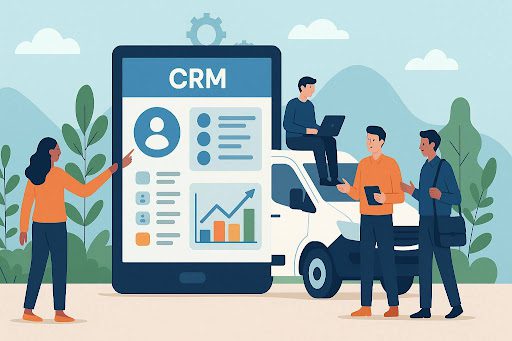 BACK TO Blog
BACK TO Blog
Asset Rental Management
Field Sales
Modern field sales teams need to use agile operational methods which combine precise real-time data for success in today's competitive market. The business speed requires better sales practices than end-of-day summaries and manual spreadsheets. Real-Time Data Analytics for Field Sales functions as a transformative capability which enables organizations to create
- May 20, 2025
- DreamzCMMS Team
- 10 minutes read
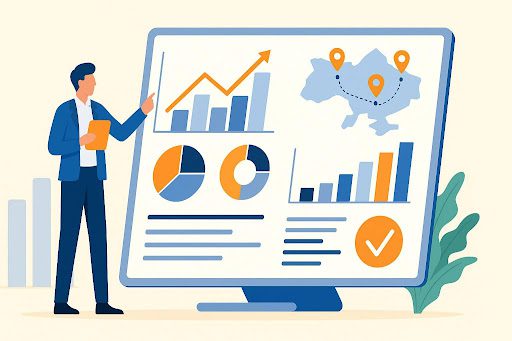
- May 20, 2025
- DreamzCMMS Team
- 10 minutes read
Modern field sales teams need to use agile operational methods which combine precise real-time data for success in today's competitive market. The business speed requires better sales practices than end-of-day summaries and manual spreadsheets. Real-Time Data Analytics for Field Sales functions as a transformative capability which enables organizations to create better data-based sales decisions at high speeds. Field Sales Software and Real-Time Data Analytics for Field Sales help modern sales organizations achieve performance optimization and resource optimization while improving customer interaction quality.
This article demonstrates how field sales analytics which operates with real-time data can transform sales operations by increasing efficiency and delivering better customer experiences and better sales performance analytics.
Looking to streamline not just field sales, but also equipment and asset performance?Check out our Asset Maintenance Management Software designed to help maintenance and sales teams stay aligned with data-driven strategies. |
What Is Real-Time Data Analytics for Field Sales?
Real-Time Data Analytics for Field Sales uses immediate data collection and integration of vital sales data from field agents alongside customer interactions and location-based information and inventory system outputs. Mobile CRM analytics and sales data visualization tools give field representatives and managers immediate access to performance metrics and order flows and customer activity.
Traditional reporting methods do not match the capabilities of real-time analytics which delivers mobile sales data insights that help businesses make adjustments based on field realities.
Core Elements of a Real-Time Field Sales Analytics System
- Sales Activity Monitoring
The field sales data tracking system provides real-time information about visits as well as calls and check-ins and deal statuses. - Territory Mapping & Route Optimization
The use of geo-analytics enables better coverage with reduced travel inefficiencies while maintaining field sales KPI tracking capabilities. - Customer Intelligence on the Move
Sales productivity benefits from accessing customer information regarding their preferences and purchase records and feedback through field sales analytics solutions. - Live Inventory and Pricing Data
Field representatives gain instant access to stock availability information and flexible pricing alternatives through this system. - Sales Forecasting with Real-Time Data
Real-time performance inputs along with demand signals trigger predictive models to automatically update sales forecasting data.
Benefits of Real-Time Data Analytics for Field Sales
1. Smarter, Data-Driven Sales Decisions
End-of-day reports are no longer necessary for managers to receive information. Real-time sales data enables managers to correct course paths while helping field reps and modifying targets according to current market conditions.
2. Enhanced Sales Productivity
Data analytics in sales operations provides reps with tools that help them achieve more successful deals with decreased work requirements. Sales representatives can perform transactions faster and reduce errors because they have instant access to client information and inventory status along with order history. You can learn more about using mobile tools to enhance team productivity by reading our Enhancing Sales Team Productivity with Mobile Tools blog.
3. Better Customer Engagement
By accessing real-time customer data representatives can create customized pitches that lead to improved customer relationships and higher conversion rates.
4. Optimized Resource Allocation
The ability to adjust route plans and meeting schedules in real time enhances daily work productivity and reduces travel expenses.
5. Real-Time Sales Forecasting
Organizations can better anticipate seasonal market changes and product stockouts and emerging customer behaviors through sales forecasting systems that utilize real-time data.
Use Cases Across Industries
Retail & FMCG
Sales analytics dashboards help organizations track product movements between regions and monitor restocking needs along with promotional campaign performance metrics.
Pharmaceutical Sales
Medical representatives employ mobile CRM analytics systems to access doctor profile information and view visit records and prescription activity data prior to their meetings.
Industrial Equipment Sales
The analysis of historical buying patterns helps representatives choose suitable product configurations through mobile sales data analysis.
Distribution & Logistics
The ability to track real-time delivery performance enables field-based resolution of inventory and customer service problems. Field Service Management Software. enables real-time tracking of delivery performance and field-based solutions for inventory and customer service issues.
Sales Data Integration: Connecting All the Dots
Sales data integration plays a fundamental role for real-time analytics to function effectively. The combination of CRM, ERP, inventory management, GPS and communication systems delivers smooth information flow.
Sales reporting automation tools including Power BI, Looker and Tableau merge various data sources to generate useful dashboards which benefit both representatives and their sales managers. You can further enhance your insights by learning about the process of Automating Sales Reporting Processes which reduces reporting delays and improves accuracy.
Learn how Automating Sales Reporting Processes can eliminate reporting delays and enhance accuracy.
KPIs That Real-Time Analytics Helps Track
With real-time access to field sales KPIs, businesses can evaluate:
- Daily customer visits per rep
- Lead conversion time
- Territory-wise sales volume
- Time spent per meeting
- Fulfilled vs. unfulfilled orders
- Real-time GPS-based rep tracking
- Repeat order frequency
- On-time visit percentages
Tracking these KPIs leads to performance transparency, rep accountability, and more data-driven sales decisions.
Deep Dive: How Real-Time Analytics Impacts Sales Strategy
Real-Time Data Analytics for Field Sales delivers strategic direction beyond basic tracking and reporting capabilities. Sales leaders use continuous data streams for prediction and planning while simultaneously making pivot decisions.
Let’s explore how real-time analytics transforms key strategic pillars:
1. Territory Optimization with Data Intelligence
Managers can evaluate micro-territory performance through the analysis of real-time sales data. Organizations can achieve better results by visualizing geographic patterns combined with sales potential and rep effectiveness which enables them to:
- Reassign underperforming zones
- Prioritize high-density or high-potential areas
- Balance workload among sales reps
- Launch micro-targeted campaigns
The method guarantees maximum reach while distributing opportunities evenly which leads to improved employee satisfaction and increased sales performance.
2. Campaign Effectiveness and Dynamic Adjustments
The traditional approach to marketing and sales campaign planning occurs during quarterly or monthly periods. Real-time analytics enables teams to observe:
- Promotional product uptake by region
- Rep engagement rates
- Campaign impact on order values or volume
Managers can adjust messaging or offer different options and redirect their focus when a campaign fails in a specific region.
Data-driven adaptability allows organizations to achieve better ROI performance while preventing resource waste.
Data Sources That Fuel Real-Time Field Sales Analytics
Multiple sources need to be connected for field sales analytics to function properly:
- CRM platforms – Customer profiles, communication history, deal pipelines
- Mobile sales apps – Visit logs, order placements, field inputs
- Geo-location systems – Route tracking, territory movement
- Inventory management systems – Live stock levels, backorders, replenishment cycles
- ERP systems – Invoicing, billing, and revenue booking
- Customer feedback systems – Reviews, support tickets, satisfaction scores
The integration of various data streams produces one unified source of truth which enables efficient sales data integration along with superior decision making.
Case Study: Improving Sales with Data Analytics – Beverage Industry
The national beverage brand launched a mobile field sales application that linked CRM and GPS modules to inventory management systems. The implementation of real-time data analytics for field sales introduced significant changes to operations:
- Before:Field representatives maintained paper catalogs while needing warehouse staff to confirm inventory status before writing down orders at the end of their shifts.
- After: The system provided real-time inventory views to reps who could create digital invoices on location and receive route optimization recommendations while moving.
Results:
- 25% increase in daily orders processed
- 40% reduction in order entry errors
- 18% higher repeat orders due to personalized offers
The company employs mobile CRM analytics for weekly campaign adjustments based on regional conversion rates comparison.
From Insights to Actions: Turning Analytics into Sales Growth
Having real-time data is only the start. The real value lies in using insights to drive actions. Here’s how:
| Insight | Actionable Response |
| High-performing SKUs in a region | Increase push through promotions, bonuses |
| Low rep activity in certain territories | Re-assign reps or rework travel plans |
| Delayed order processing | Investigate process bottlenecks, automate approvals |
| Low conversion from visits | Provide coaching or change lead prioritization tactics |
| Inventory shortfalls | Adjust forecasts, alert procurement teams |
The implementation of data-driven sales decisions helps teams recognize and resolve performance problems before they become historic issues.
Compliance, Security, and Audit Readiness
The pharmaceutical, finance, and healthcare sectors face increased regulatory requirements that demand audit readiness as an essential component. Real-time analytics platforms offer:
- Time-stamped logs of every rep activity
- Geo-fenced check-ins to confirm location compliance
- Data encryption and access controls to protect sensitive customer information
- Automated reports for regulatory documentation
Sales reporting automation turns compliance into an operational byproduct that reduces its burden on business operations. Real-time data proves essential for Improving First-Time Fix Rates because it supports accuracy in field operations and service resolution for particular industries.
Key Metrics for Field Sales Leadership
Sales managers and regional heads should access these KPIs through real-time dashboards for regular monitoring:
- Visit-to-order ratio: Measures conversion effectiveness
- Average order value (AOV): Indicates upsell and cross-sell success
- Daily coverage per rep: Evaluates rep productivity
- New customer acquisition rate: Tracks territory expansion
- Revenue vs. target: Enables mid-cycle adjustments
Sales leaders gain the ability to conduct weekly performance evaluations instead of running delayed postmortems by linking real-time inputs to relevant metrics.
Overcoming Common Challenges
1. Data Overload
Solution: Use filters, smart alerts, and role-specific dashboards to avoid overwhelming users.
2. Connectivity Issues
Solution: Adopt mobile platforms with offline functionality and automatic sync.
3. Rep Resistance
Solution: Introduce gamification, show real-time performance boosts, and train users to interpret sales performance analytics.
4. Siloed Systems
Solution: Focus on sales data integration to eliminate isolated datasets and improve insight generation.
Best Practices for Implementation
1. Set Performance Goals
All analytics objectives need to support fundamental business targets which focus on increasing sales efficiency or reducing customer departure rates or boosting conversion rates.
2. Integrate Systems Holistically
The integration of CRM and ERP systems and field tracking tools produces unified insights.
3. Use Visual Tools
Visual sales data tools including heatmaps and dashboards and KPI trackers should be implemented for real-time data monitoring.
4. Ensure Mobile-First Design
Your field team operates on the move—ensure tools are lightweight, responsive, and usable offline.
4. Review & Optimize Constantly
The field sales analytics needs continuous improvement through assessments of rep feedback and usage statistics as well as technological development trends.
Conclusion
The ability to make decisions on the go, adapt quickly to market changes, and optimize every sales interaction is what defines successful sales organizations today. With Real-Time Data Analytics for Field Sales, businesses can unlock deeper insights, improve customer experiences, and fuel high-performance teams.
From sales forecasting with real-time data to mobile-first tools and predictive insights, the power of real-time analytics is reshaping how field sales teams operate and succeed.
Ready to take your field sales strategy to the next level? Explore our powerful Field Sales Software to get the real-time insights, mobile tools, and automated analytics your team needs to outperform the competition.
Ready to Transform Your Field Sales Strategy?At DreamzCMMS, we empower businesses with cutting-edge tools to optimize field operations, boost productivity, and make data-driven decisions. Learn more about our full suite of solutions: DreamzCMMS Want to see it in action? Schedule your Free Demo today and explore how real-time analytics can elevate your field sales performance. |
Ready for More?
Talk to one of our CMMS experts and see how DreamzCMMS can simplify your maintenance operations.
Book a free consultation
